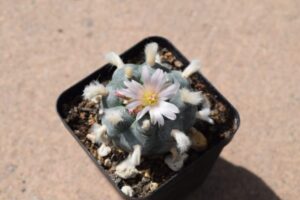Cacti are remarkable plants that often evoke images of sun-scorched deserts and sandy landscapes. Their intricate ability to thrive in hostile environments has allowed them to captivate the hearts of botanists and horticulturists alike. However, the natural habitat of cactus plants extends beyond the conventional understanding of dry regions. This exploration unveils the surprising versatility of cacti and expands our appreciation for these extraordinary species.
The desert habitat: a classic abode
When conjuring the image of a cactus, many envision the arid deserts of North America, particularly the Sonoran and Mojave Deserts. These regions are iconic for their vast stretches of sandy soil, parched air, and, of course, their striking cactus inhabitants like the Saguaro and the Organ Pipe. Cacti have adapted marvelously to this environment, developing an array of physical characteristics that enable survival.
For instance, their succulent stems store copious amounts of water, making them resilient to prolonged droughts. The waxy coating that envelops the cactus’ exterior minimizes moisture loss, while spines serve a dual purpose: protecting the plant from herbivores and reducing water loss through transpiration. The ability to photosynthesize through their stem rather than leaves is another adaptive trait that allows them to thrive in extreme sunlight.
Yet, while deserts are a stereotypical home for cacti, they represent merely one niche among many.
Expanding beyond the deserts: diverse ecosystems
Cacti have also ingeniously occupied a variety of ecosystems, including scrublands, grasslands, and even tropical forests. The Chihuahuan Desert, on the border of the United States and Mexico, showcases a unique assemblage of cacti that thrives in a different microclimate characterized by slightly more temperate weather and seasonal rains.
In addition, certain cactus species can be found in more humid environments, such as the coastal savannas of Argentina, where they flourish alongside diverse flora. Here, varieties like the Pereskia exhibit green, leaf-like structures that further challenge the traditional perspective of cacti as solely desert inhabitants. These tropical species display a unique robustness that allows them to coexist with lush vegetation, embodying a fascinating intersection of ecosystems.
Understanding the ecological relationships
It is essential to recognize that the habitat of cacti is not merely defined by mere geography, but also by the intricate ecological relationships they foster within their ecosystems. Cacti and their surroundings engage in symbiotic interactions that foster resilience and biodiversity. For instance, the Saguaro cactus not only provides sustenance to various creatures by producing fruit but also serves as a nesting site for birds like the Gila Woodpecker.
In turn, these birds contribute to the reproduction of cacti through seed dispersal, creating a harmonious circle of life. A myriad of insects, lizards, and mammals also contribute to the thriving ecosystem surrounding cacti. These interactions exemplify the complexity and interdependence of life forms, reminding us of the importance of conservation efforts in maintaining the delicate balance of these habitats.
A fragile existence: threats to habitat
Despite their remarkable adaptability, cacti face an array of challenges that jeopardize their survival. Habitat destruction, driven by urban expansion and agricultural activities, poses a significant threat. The encroachment of human development disrupts ecological networks, often decimating entire cactus populations in the process.
Additionally, climate change is altering weather patterns, introducing variability in rainfall and temperature that disrupts the unique habitats to which cacti have adapted over millennia. The Saguaro cactus, for instance, may struggle to reproduce in increasingly warmer climates, compromising the very identity of the desert landscapes we associate with them.
Conservation measures are paramount in mitigating these threats. Understanding the diverse habitats where cacti thrive is crucial for crafting effective conservation strategies. Restoration efforts that focus on preserving natural landscapes and fostering ecological education can cultivate a deeper appreciation of the vital role that cacti play in their ecosystems.
Conclusion: a paradigm shift in perception
The journey through the natural habitats of cacti reveals a complexity that transcends the simplistic view of these plants as mere desert dwellers. Cacti embody resilience, adaptability, and an intricate connection with their ecological counterparts.
As we cultivate our understanding of these remarkable species, we foster a paradigm shift, encouraging a more nuanced appreciation for the multifaceted environments that support their existence. By nurturing curiosity and acknowledging the fragility of these ecosystems, we can ensure the continued survival of cacti, safeguarding not only their beauty but also the rich biodiversity they sustain.
In this light, the world of cacti offers much more than a glimpse of desolate beauty; it invites exploration, wonder, and a renewed commitment to preserving the complexities of nature. Embracing this shift in perspective can enrich our lives, sparking an appreciation for the intricate web of life that we are all a part of.





Leave a Comment